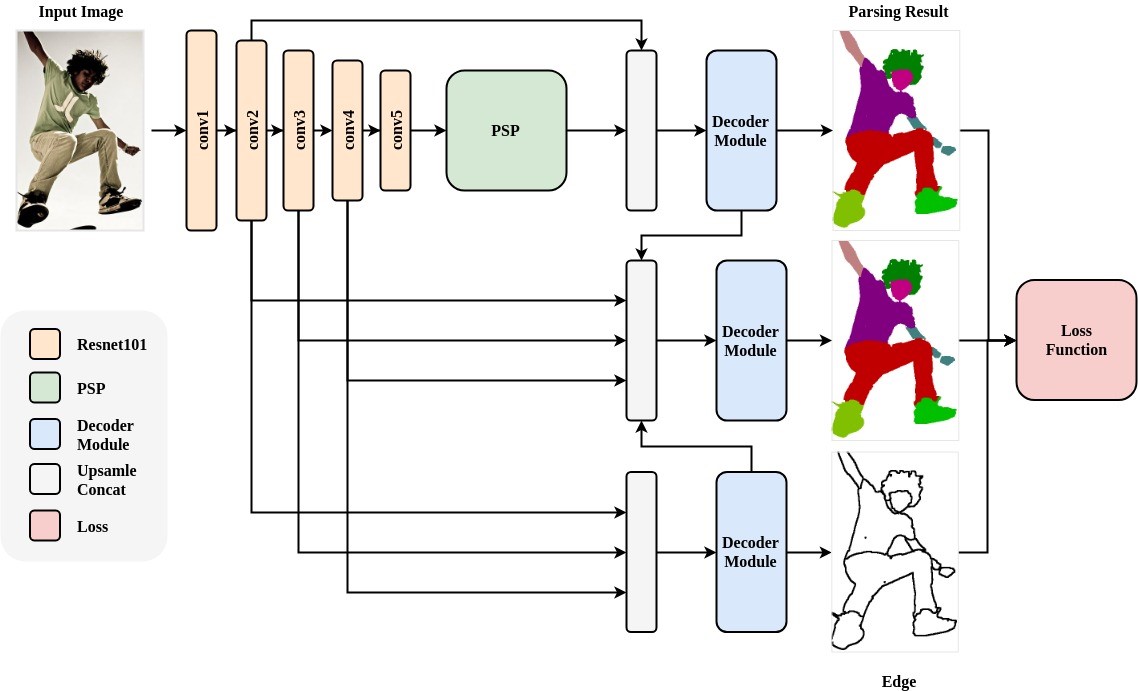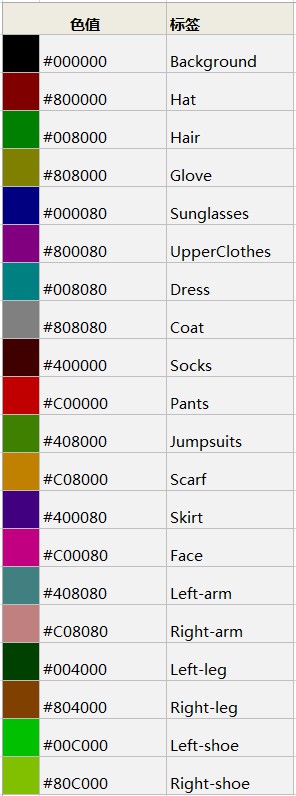| Module Name | ace2p |
|---|---|
| Category | Image segmentation |
| Network | ACE2P |
| Dataset | LIP |
| Fine-tuning supported or not | No |
| Module Size | 259MB |
| Data indicators | - |
| Latest update date | 2021-02-26 |
-
- Human Parsing is a fine-grained semantic segmentation task that aims to identify the components (for example, body parts and clothing) of a human image at the pixel level. The PaddleHub Module uses ResNet101 as the backbone network, and accepts input image sizes of 473x473x3.
-
-
paddlepaddle >= 2.0.0
-
paddlehub >= 2.0.0
-
-
-
$ hub install ace2p
- In case of any problems during installation, please refer to:Windows_Quickstart | Linux_Quickstart | Mac_Quickstart
-
-
-
$ hub run ace2p --input_path "/PATH/TO/IMAGE" -
If you want to call the Hub module through the command line, please refer to: PaddleHub Command Line Instruction
-
-
-
import paddlehub as hub import cv2 human_parser = hub.Module(name="ace2p") result = human_parser.segmentation(images=[cv2.imread('/PATH/TO/IMAGE')])
-
-
-
def segmentation(images=None, paths=None, batch_size=1, use_gpu=False, output_dir='ace2p_output', visualization=False):
-
Prediction API, used for human parsing.
-
Parameter
- images (list[numpy.ndarray]): Image data, ndarray.shape is in the format [H, W, C], BGR.
- paths (list[str]): Image path.
- batch_size (int): Batch size.
- use_gpu (bool): Use GPU or not. set the CUDA_VISIBLE_DEVICES environment variable first if you are using GPU
- output_dir (str): Save path of output, default is 'ace2p_output'.
- visualization (bool): Whether to save the recognition results as picture files.
-
Return
- res (list[dict]): The list of recognition results, where each element is dict and each field is:
- save_path (str, optional): Save path of the result.
- data (numpy.ndarray): The result of portrait segmentation.
- res (list[dict]): The list of recognition results, where each element is dict and each field is:
-
-
def save_inference_model(dirname)
-
Save the model to the specified path.
-
Parameters
- dirname: Model save path.
-
-
-
PaddleHub Serving can deploy an online service of human parsing
-
-
Run the startup command:
-
$ hub serving start -m ace2p
-
-
The servitization API is now deployed and the default port number is 8866.
-
NOTE: If GPU is used for prediction, set CUDA_VISIBLE_DEVICES environment variable before the service, otherwise it need not be set.
-
-
-
With a configured server, use the following lines of code to send the prediction request and obtain the result
-
import requests import json import cv2 import base64 import numpy as np def cv2_to_base64(image): data = cv2.imencode('.jpg', image)[1] return base64.b64encode(data.tostring()).decode('utf8') def base64_to_cv2(b64str): data = base64.b64decode(b64str.encode('utf8')) data = np.fromstring(data, np.uint8) data = cv2.imdecode(data, cv2.IMREAD_COLOR) return data # Send an HTTP request data = {'images':[cv2_to_base64(cv2.imread("/PATH/TO/IMAGE"))]} headers = {"Content-type": "application/json"} url = "http://127.0.0.1:8866/predict/ace2p" r = requests.post(url=url, headers=headers, data=json.dumps(data)) # print prediction results print(base64_to_cv2(r.json()["results"][0]['data']))
-
-
-
1.0.0
First release
-
1.1.0
Adapt to paddlehub2.0
-
1.2.0
Remove Fluid API
$ hub install ace2p == 1.2.0



